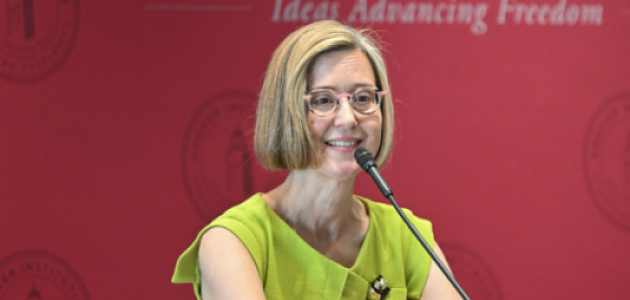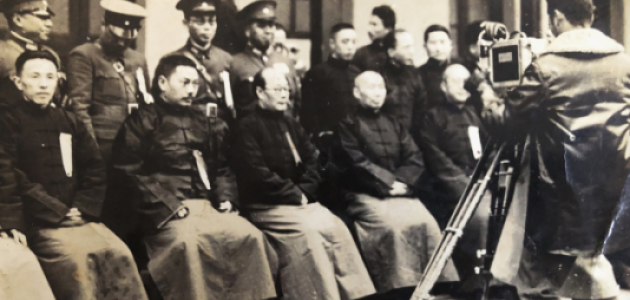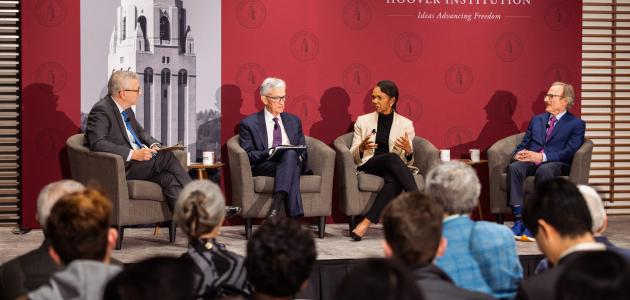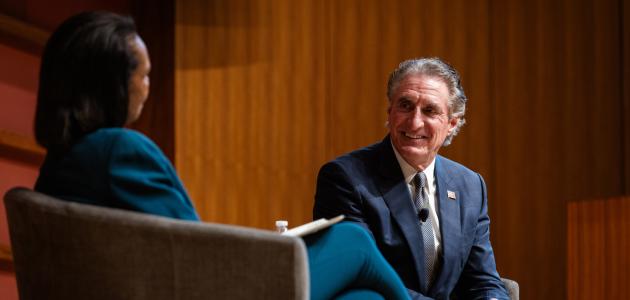Finding aids to the collections described below are now available through the Online Archive of California.
Harold Melvin Agnew motion picture film, 1945
Agnew, a physicist at Los Alamos Scientific Laboratory during World War II, flew with the crew on the first atomic strike mission. His motion picture depicts the atom bombs exploding over Hiroshima and Nagasaki, Japan.
Rita Ricardo-Campbell papers, 1964–2004
This collection of correspondence, memoranda, and printed matter relates to the administration and funding of higher education, the Western Interstate Commission for Higher Education, the Mountain States Regional Medical Program, and the National Center for Higher Education Management Systems. Ricardo-Campbell is an American economist and educator and a senior fellow at the Hoover Institution.
Mary Ellen Leary collection, 1963–1984
The clippings, press releases, California state government publications, and other printed matter collected by this journalist document the political career of Ronald Reagan and California state politics and government during his gubernatorial administration.
John Sidney McCain papers, 1933–1945
John Sidney McCain, an admiral in the United States Navy, commanded the First Carrier Task Force in World War II. He was awarded the Navy Cross for heroism and the Distinguished Service Medal with two Gold Stars for exceptional service. His papers include correspondence, orders, photographs, and other material relating to U.S. naval aviation and naval operations in the Pacific Theater during World War II.
Diane Ravitch papers, 1956–2007
As a professor of education, prolific writer, and advocate of improvements in American education, Ravitch's papers focus on education in the United States. Included are correspondence, printed matter, and research materials for her publications.
Robert Tryon Frederick papers, 1928–1967 (updated)
A major general in the U.S. Army, Frederick commanded the First Special Service Force in Italy and France from 1942 to 1944 and led the 1951 military mission to Greece. His correspondence, diaries, photographs, and other papers shed light on these military activities.
Kurt Richard Grossman papers, 1913–1973 (updated)
This collection concerns Jewish refugees from Nazi Germany, postwar German and Austrian restitution payments to Jewish war victims, German-Israeli relations, the conditions of Jews throughout the world, and civil liberties in the United States and Germany. Grossman, a German American author and journalist, was president of the German League for Human Rights.
Aleksandr Fyodorovich Kerensky miscellaneous papers, 1945–1965 (updated)
Kerensky, who served as premier in the Russian Provisional Government in 1917, settled in the United States in 1940. This small collection of correspondence and writings relates to the Russian Revolution and personal matters. It includes Kerensky's manuscript "The Genesis of the 'October Revolution' of 1917" and correspondence with Vasilii Maklakov, Michael Karpovich, and Anatole G. Mazour.
Sam Tanenhaus papers, 1901–1998 (updated)
The correspondence, trial transcripts, notes, and other material in this collection concern the life of Whittaker Chambers and the Alger Hiss espionage case. They were used by Tanenhaus for his book Whittaker Chambers: A Biography, published in 1997.
Albert J. and Roberta Wohlstetter papers, 1919–2007 (updated)
This husband and wife team was affiliated with the Rand Corporation and held various government positions involving national defense. Their papers, which include correspondence, speeches, memoranda, and reports, relate to U.S military and national security policy, nuclear warfare strategic planning, and nuclear proliferation issues.










